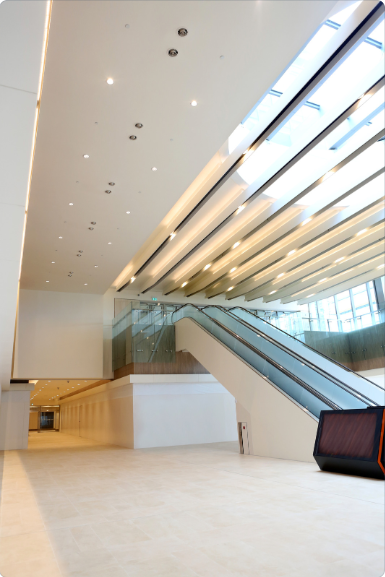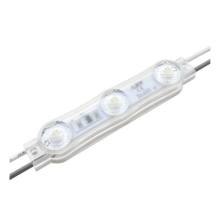
LED Lights: Rising Popularity in the Office and Retail Scenes
Before 1962, incandescent and fluorescent lights were the main lighting options for commercial use. The rapid shift from these conventional light sources to LED lights began in the early 2000s when consumers discovered LED lights to be more durable, versatile, and energy-efficient options.
What are LEDs?
Light-emitting diodes, commonly known as LEDs, are semiconductor devices that emit light when current flows through them.
The earlier produced LEDs are low-intensity red lights and mostly used as small components of electronic gadgets, like remote controls. Today, LEDs have evolved and come in various colours, shapes and sizes.
LED Lights in the Office Space
Studies show that light has significant effects on human behaviours and sleep patterns. As the human body relates dim and soft lights with sleep, poor lighting tends to affect employee efficiency.
Bright lighting in the office workplace boosts productivity by improving the employees’ ability to focus, stay alert, and concentrate. When natural light source is not possible or available, LEDs offer comparable, or in most cases, better light quality due to their glare-free and uniform illumination.
The various shapes and sizes of LED lights also make them viable options in areas with limited space, or for task areas that require extra lighting.
LED strips, for example, are often used as perimeter lighting around ceilings, under cabinets, shelves and desks, and pathways. Because they are lightweight, long, and cuttable, they can easily be modified to fit inconspicuously.
LED modules, like the LBY ZE03CB3, on the other hand, are best for workspaces and accent lighting due to their small, uniform shape. They are usually installed in the workstations, reception areas and conference rooms.
LED Lights in Retail
Most LED lights are color-temperature adjustable, can be used as focus lights, and are usually the preferred solution to catch customers' attention.
LBY neon flex LED lights have become popular in retail due to their versatility and ability to instantly enhance a shop’s visual appearance. Because of their waterproof and flexible features, they are durable and cost-efficient options for both indoor and outdoor signages.
Neon flex LED lights, like the LBY SE120JC3-H1616 are usually used for door and wall signs for store branding. Most come with an IP67 rating so they can withstand humidity. Silicon flex LED lights, such as the LBY SE144JC3-N0408 also make ideal indoor and outdoor options, and are suitable for when designs are more complex and the areas of display have tight bends.
Lights, in general, also play a key role on consumers’ purchasing behaviours because they affect the customers’ perception of product quality and price. Nowadays, most stores use tunable Correlated Colour Temperature (CCT) LED strips, such as the LBY SE120LA1-08-DW and LBY SE120LC1-10-DW for ambient lighting and displays, since they can be adjusted to suit the tone of products on display.
Advantages of Using LED Lights
LED lights are customisable, produce less heat and require low power to run, thereby making them sustainable options that may help reduce electricity bills.
While some LED light options can be costly, they tend to compensate with longer lifespan against other lighting choices, therefore reducing the need for frequent replacements.
LED lights are also the more environmentally friendly option as they do not contain hazardous materials like mercury, and have a smaller carbon footprint to run.
If you have a particular LED lighting and accessory enquiry, our Team can help you. You may find our contact details here.










